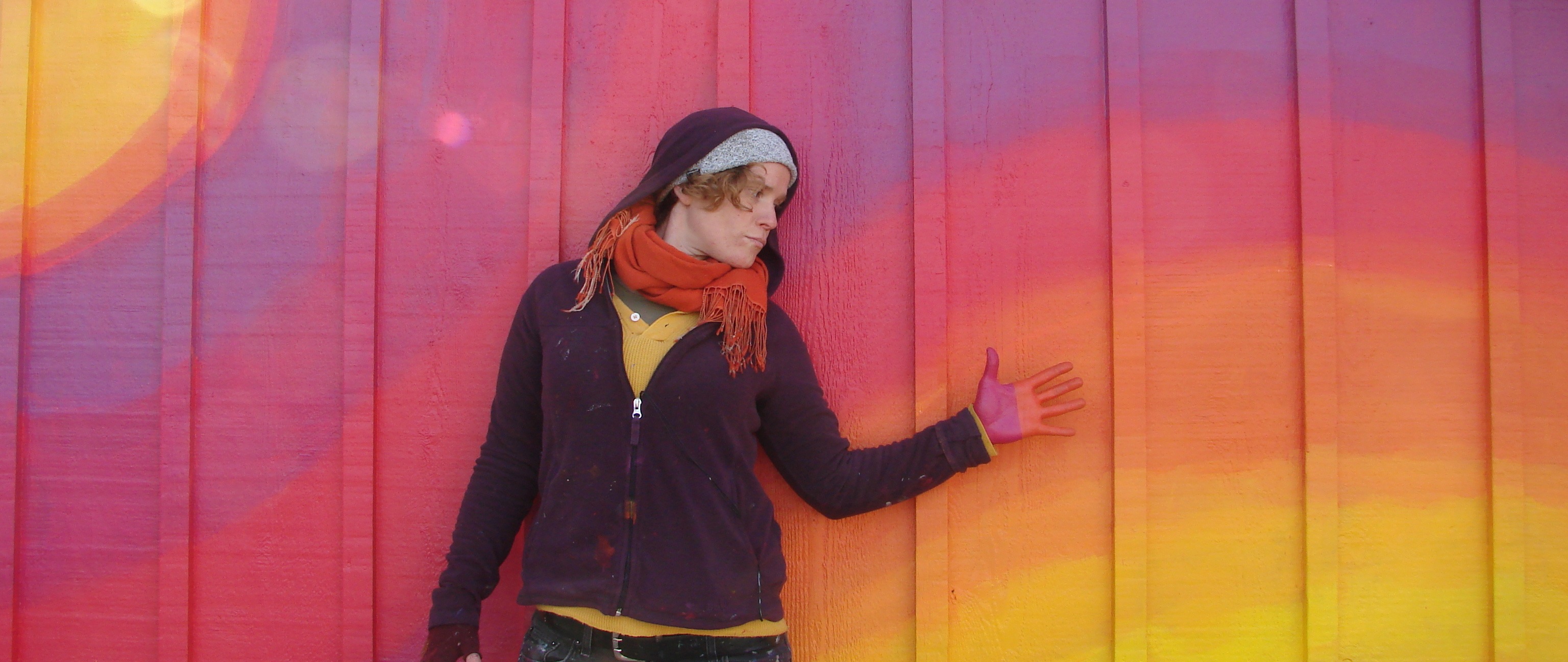About Mary Thiefels

Mary became involved in mural-painting in the summer of 1998, when she and a group of friends lobbied the Ann Arbor Railroad to create murals on it’s downtown underpasses. It wasn’t until years later, after much reflection on that summer’s installation of 8 murals, that Mary was able to see the vital impact that those murals made on the local Ann Arbor community. The underpasses connect Ann Arbor’s neighborhoods with the city’s center. The murals helped to create a beautiful aesthetic and safer transition for pedestrians and car travelers.
In 2002, Mary received her first public commission. Mary and friend Cullen Neaton were hired by Peter Allen and Associates to paint a mural on the N. Main Street underpass near Argo damn. They designed a vibrant, lush, arching welcome for those coming to the downtown area from M-14. The popular mural brought color and beauty to what was at the time a blighted area.
Returning to the tresses again, Mary began to share the underpass mural experience with local teenagers. She taught workshops with teens through Neutral Zone, Ann Arbor Art Center and Community High School: covering design, budget, and the execution of public mural projects.
It was the culmination of these railroad community projects that pointed Mary in the direction of public mural art as a career. She founded TreeTown Murals (TTM) in the summer of 2007.
TreeTown Murals has met the needs of many mural loving audiences for over the years. The mural work can be seen in a variety of settings, in private residences, places of business, and the public sphere. It is in the public realm that the murals reach the most individuals. TreeTown’s public murals show the depth of their surroundings and have helped to further the public mural tradition throughout the state of Michigan and beyond.
As TreeTown Murals grows and evolves so do the murals. Each new project is a unique opportunity to develop new skills and to fine tune old ones. The murals have become more sophisticated and the avenues for educating and involving the community are more diverse.
Mary says, “Murals have a way of touching all of us on a very personal and individual level. They can be purely aesthetic and uplifting or incredibly socially transformative. Our stories and legacies stand stronger because of mural making throughout history. This is how we leave our mark on society. This is how we evoke change and educate our children. I look forward to serving communities for years to come by creating murals for public sites, businesses, and personal spaces, and by continuing to foster the connection between people and there surroundings.”
